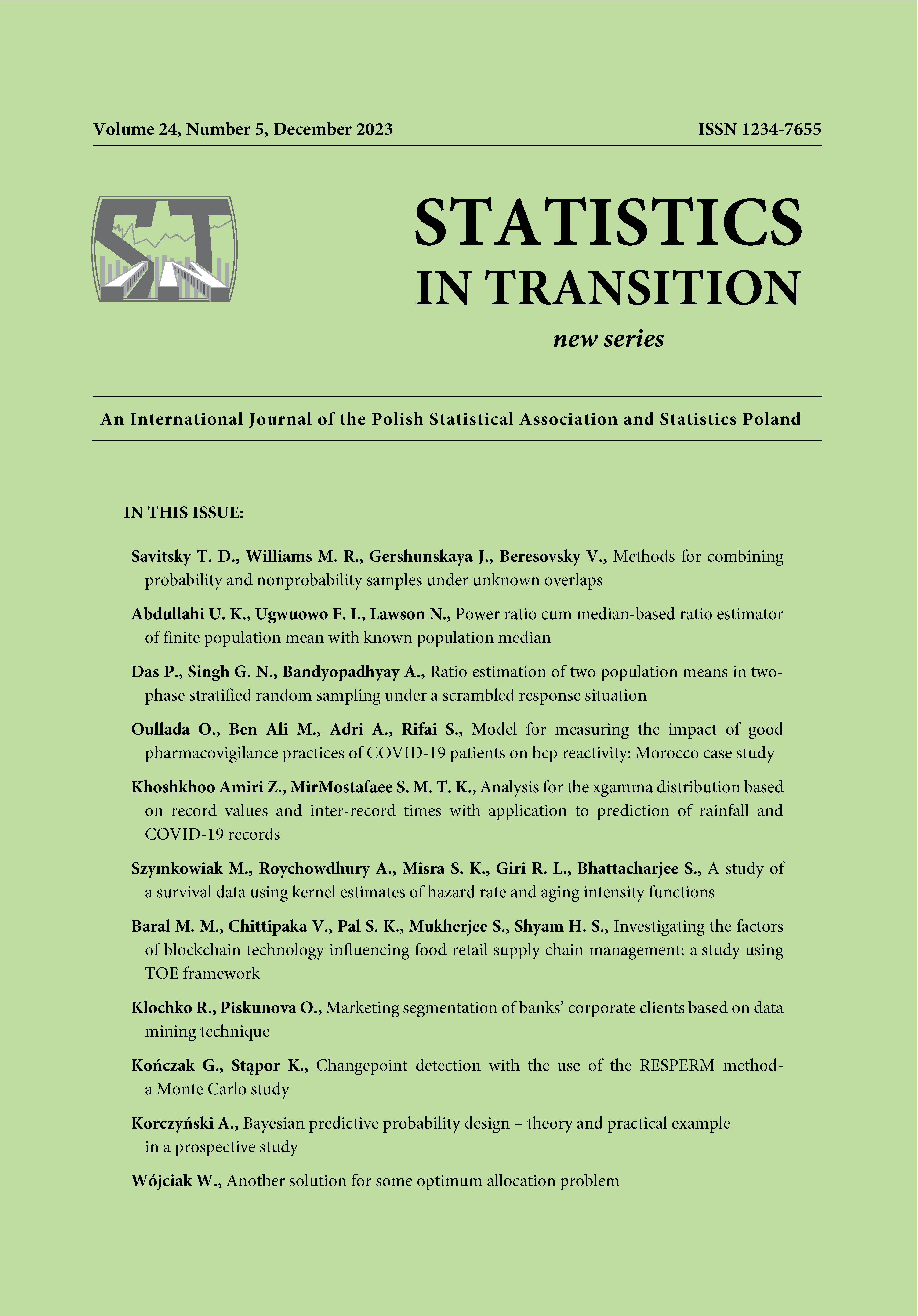Methods for combining probability and nonprobability samples under unknown overlaps
Methods for combining probability and nonprobability samples under unknown overlaps
Author(s): Terrance D. Savitsky, Matthew R. Williams, Julie Gershunskaya, Vladislav BeresovskySubject(s): Economy
Published by: Główny Urząd Statystyczny
Keywords: Survey sampling; Nonprobability sampling; Data combining; Inclusion probabilities; Exact sample likelihood; Bayesian hierarchical modeling;
Summary/Abstract: Nonprobability (convenience) samples are increasingly sought to reduce the estimation variance for one or more population variables of interest that are estimated using a randomized survey (reference) sample by increasing the effective sample size. Estimation of a population quantity derived from a convenience sample will typically result in bias since the distribution of variables of interest in the convenience sample is different from the population distribution. A recent set of approaches estimates inclusion probabilities for convenience sample units by specifying reference sample-weighted pseudo likelihoods. This paper introduces a novel approach that derives the propensity score for the observed sample as a function of inclusion probabilities for the reference and convenience samples as our main result. Our approach allows specification of a likelihood directly for the observed sample as opposed to the approximate or pseudo likelihood. We construct a Bayesian hierarchical formulation that simultaneously estimates sample propensity scores and the convenience sample inclusion probabilities. We use a Monte Carlo simulation study to compare our likelihood based results with the pseudo likelihood based approaches considered in the literature.
Journal: Statistics in Transition. New Series
- Issue Year: 24/2023
- Issue No: 5
- Page Range: 1-34
- Page Count: 34
- Language: English

